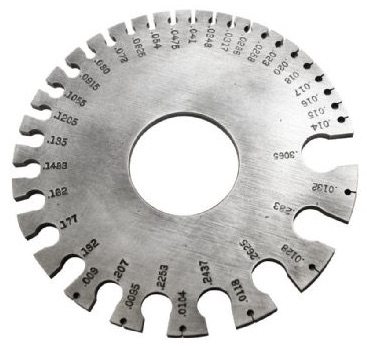Manufacturers express the thickness of metal panels as their gauge with 22 gauge being the thickest and 29 gauge the thinnest of traditionally sold metal roof and wall panels.
Use micrometer to gauge thickness of siding.
These handheld tools have a high resolution vernier analog scale or digital readout for precise measurements.
The standard gauge of our buildings is 26 gauge steel siding but we can also do 24 and 22 gauge steel depending on your specific needs.
We want to provide you with the most reliable building possible to insure that you are completely satisfied and the building is.
The gauge of polythene can be converted to micron by dividing by 4.
Vinyl siding grades vinyl siding comes in several grades and thicknesses.
Each gauge represents a nominal decimal range.
50mu 200 gauge 0 05mm.
Looking at the decimal thickness enables more precise and sometimes surprising comparisons.
Typically it is around 40 45 millimeters thick and some stores and manufacturers will offer even more variety on the type of vinyl siding thicknesses you can buy.
Example of conversion from mil to micron mu below.
And the thickness in millimeters can be calculated by dividing the micron by 1000.
They re commonly used for measuring tubing bearings wires and sheet metal or other thin materials.
Most metal roof and wall panels on the market are between 22 29 gauge with 20 gauge being the thickest and 29 gauge being the thinnest panels sold.
For an example of how gauge can be confusing see the below.
Although it can vary by manufacturer a higher grade vinyl will typically cost more.
We do offer multiple gauges but 26 gauge is the most popular and durable.
According to the standards of the american society for testing and materials vinyl siding should not be thinner than 0 035.
If you were to compare 30 gauge galvanized steel to aluminum the aluminum equivalent would be 26 gauge.
Another common method for determining film thickness is using a micrometer and this method is described in d6988.
Vinyl siding thickness can vary from a minimum of 35 millimeters for low grade products up to around 55 millimeters for some of the higher quality and more expensive products.
For example trucedar siding is g60 galvanized steel with a thickness of 016.
100mu 400 gauge 0 10mm.
Micrometers are gauges for measuring small objects or distances with greater resolution than calipers.
We know from experience that one of the choices that is sometimes overlooked is which gauge metal to use.
For example a 26 gauge steel panel can range between 0 0179 and 0 0217 inches thick according to a university.
If it were me i d get a decent quality ball micrometer that measures to ten thousands and a stand off of amazon.
Micrometers are relatively inexpensive and the concept behind them appears simple but measuring plastic film creates a number of issues.
Gauge refers to the thickness of the panel and is represented in number form.




























